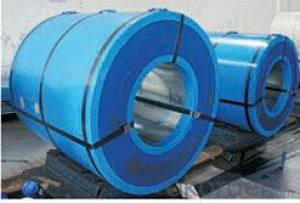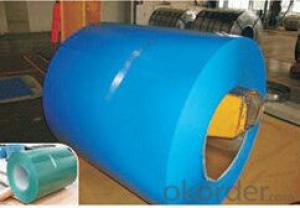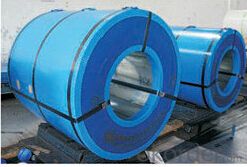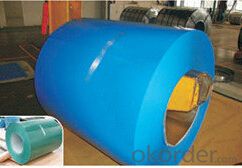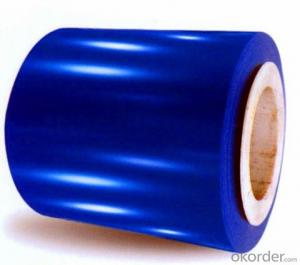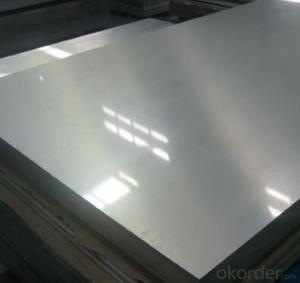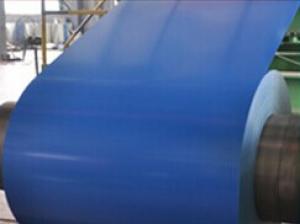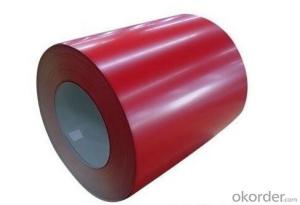Hrb85-90 Az70g Good Quality Prepainted Galvalume Steel Coil
- Loading Port:
- Tianjin
- Payment Terms:
- TT OR LC
- Min Order Qty:
- 25 m.t.
- Supply Capability:
- 10000 m.t./month
OKorder Service Pledge
OKorder Financial Service
You Might Also Like
Product Description
Model NO.:SGLCC, SGLCD
Surface Treatment:Alu-Zin Coating
Certification:ISO, SGS, BV, RoHS, IBR
Technique:Hot Rolled
Standard:ASTM, JIS, GB, AISI, DIN, BS
Application:Roof Building Construction
Edge:Slit edge
Stock:Stock
Steel Grade:Q235
Thickness:0.16-0.8mm
Width:914/1000/1200/1219/1220/1250mm
Al-Zinc Coating:Az50-150G/M2
Spangle:Regular Spangle
Surface Printing:Can Be Used The Base Material of PPGL
Export Markets:Global
Additional Info.
Trademark:HL
Packing:Export High-Accuracy Package
Standard:0.43*1219*C
Origin:China
HS Code:72104900
Production Capacity:10000mt/month
Specification :
1. Thickness: 0.12mm-1.3mm
2. Width: 600mm-1250mm
3. Length: According to client's demands
4. Top paint: 15 to 25 um (5 um + 12-20 um)
Back paint: 7 +/- 2 um5. Gloss: Normal or High gloss
6. Alume Zinc coating: AZ50-AZ275G/psm
7. Inside Diameter: 508mm/610mm
8. Outside Diameter: 1000mm-1500mm
9. Coil weight: 3-8 tons
10. Payment: T/T, L/C, D/P, Paypal, Western Union
11. Trade Term: FOB, CFR, CIF
12. MOQ: 25 Mt
13. Package: Export standard package or as request
14. Shipment: By container
15. Standard: AISI, ASTM, BS, DIN, GB, JIS
16. Grade: JIS G3322, CGLCC, ASTM A755, CS-B
Basic Info.
Model NO.:SGLCC, SGLCD
Surface Treatment:Alu-Zin Coating
Certification:ISO, SGS, BV, RoHS, IBR
Technique:Hot Rolled
Standard:ASTM, JIS, GB, AISI, DIN, BS
Application:Roof Building Construction
Edge:Slit edge
Stock:Stock
Steel Grade:Q235
Thickness:0.16-0.8mm
Width:914/1000/1200/1219/1220/1250mm
Al-Zinc Coating:Az50-150G/M2
Spangle:Regular Spangle
Surface Printing:Can Be Used The Base Material of PPGL
Export Markets:Global
Additional Info.
Trademark:HL
Packing:Export High-Accuracy Package
Standard:0.43*1219*C
Origin:Shandong
HS Code:72104900
Production Capacity:30000mt
Product Description
Specification :
1. Thickness: 0.12mm-1.3mm
2. Width: 600mm-1250mm
3. Length: According to client's demands
4. Top paint: 15 to 25 um (5 um + 12-20 um)
Back paint: 7 +/- 2 um5. Gloss: Normal or High gloss
6. Alume Zinc coating: AZ50-AZ275G/psm
7. Inside Diameter: 508mm/610mm
8. Outside Diameter: 1000mm-1500mm
9. Coil weight: 3-8 tons
10. Payment: T/T, L/C, D/P, Paypal, Western Union
11. Trade Term: FOB, CFR, CIF
12. MOQ: 25 Mt
13. Package: Export standard package or as request
14. Shipment: By container
15. Standard: AISI, ASTM, BS, DIN, GB, JIS
16. Grade: JIS G3322, CGLCC, ASTM A755, CS-B
Why Us :
1. Certificate: ISO, BV, SGS
2. Feedback: Within 24 hours
3. Best price based on good quality
4. Quick delivery
5. Stock and production
6. Experience for many years, specilized in manufacturing and exporting
7. Customers from many continents, such as North America, South America, Europe, Africa, etc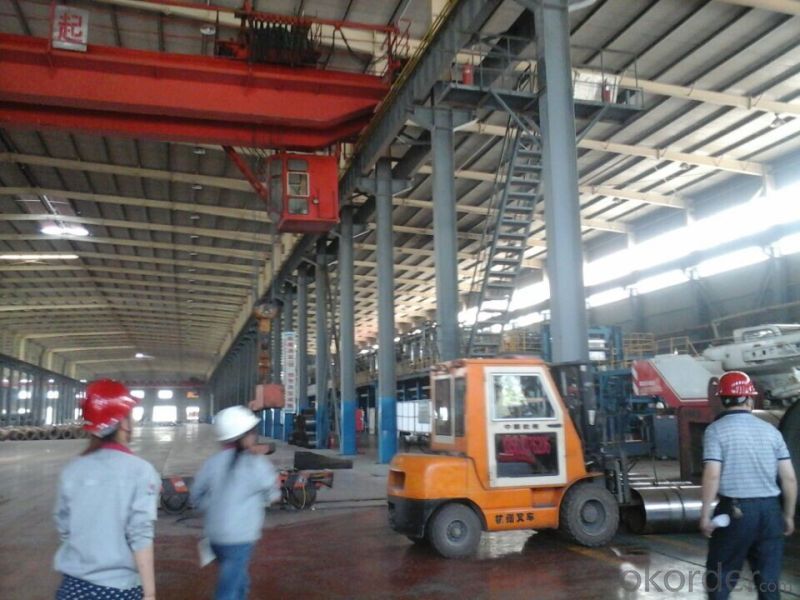
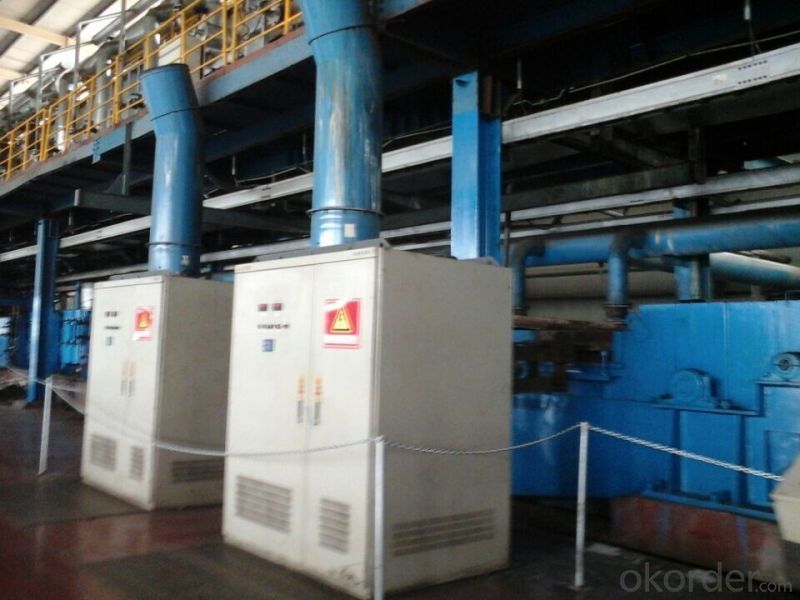
| Commodity | Hot Dip Alu-zinc Steel Coils |
| Techinical Standard: | ASTM A792 |
| Grade | TDX51D+AZ, SGLCC |
| Types: | Commercial / Drawing / Deep Drawing / Structural quality |
| Thickness | 0.18-1.0mm |
| Width | 914/1000/1200/1219/1220/1250mm |
| Type of coating: | galvalume (AL-zinc) |
| Zinc coating | AZ50-150g/m2 |
| Surface treament | chromed with passivation / environmental chromed |
| oiled/slightly oiled/ dry/not anti-fingerprint/ skinpassed | |
| Zincalume with protection film (35 µ , Nominal Adhesion 265 gr/ 50mm) | |
| Based metal: Steel Sheet, 55% Aluminum-Zinc alloy coated in Coils | |
| ID coil | 508mm or 610mm |
| MIQ | minimum 25 MT for each size |
| Supply capacity: | 1000MT per month |
| Package: | Properly packed for ocean freight exportation in containers |
| Application: | Industrial panels, roofing and siding for painting |
| Price terms | FOB, CFR, CIF |
| Payment terms | 20%TT in advance+80% TT or irrevocable 80%L/C at sight |
| delivery time | 25 days after recepit of 20% TT |
| Remarks | Insurance is all risks |
| MTC 3.1 will be handed on with shipping documents | |
| We accept SGS certificatation test | |
FAQ
1.What's your MOQ?
25MT, it is for one container.
2.Do you have QC teams?
Yeah, sure, our QC team is very important, they will keep the quality control for our products.
3. What's your normal delivery time?
Our delivery time about 10-20days for standard sizes, if you have other requirements like hardness and width ,it is about 20-40days. But don't worry ,we also try our best for the delivery time ,because time longer and our cost is higher.
4.Are the products tested before shipping?
Yes, all of our PPGI and GI was qualified before shipping. We test every batch every day
- Q: How do the sandpaper grits compare with different coarse levels of steel wool? For example, I'm finishing a homemade entertainment center, and using a tinted polyurethane, and it says to use 000 grade steel wool, but mine is #3, could I use some sanpaper instead, and what grit?
- Steel wool and wax is for the final buff after the finish coat. Sanding will scratch the finish and should only be done before the finish coat. Steel wool and wax have been used as the final finish to remove rough areas and buff the finish for a long time.
- Q: Yes, I understand it can weaken steel greatly. But can it MELT steel? (key word: melt)
- Jet fuel is kerosene in 6 grades and highly filtered. can it melt or weaken steel? No, it preserves it.
- Q: How are steel coils processed for stamping or forming?
- Steel coils are typically processed for stamping or forming by first uncoiling them and then flattening or leveling them to remove any curvatures or distortions. After that, the coils are fed into a stamping or forming machine, where they undergo different processes such as cutting, bending, or shaping to achieve the desired final product.
- Q: What are the dimensions of steel coils used in the aerospace industry?
- The dimensions of steel coils utilized in the aerospace sector exhibit variability, contingent upon the particular application and prerequisites. Nonetheless, in a general sense, steel coils intended for aerospace purposes typically possess standardized dimensions to ensure compatibility and facilitate utilization. Ordinarily, the thickness of aerospace-grade steel coils falls within the range of 0.008 inches (0.2 mm) to 0.125 inches (3.2 mm). The width may span from approximately 0.5 inches (12.7 mm) to 72 inches (1829 mm), although narrower widths are more frequently encountered. Regarding the coil's length, it can extend from several hundred feet to thousands of feet, contingent upon the specific requirements of the aerospace manufacturer. It should be emphasized that these dimensions are not rigid and can be tailored to meet the requirements of the aircraft or aerospace component being produced. The dimensions of steel coils can also vary depending on the specific steel alloy employed and the manufacturing procedures implemented. Ultimately, the dimensions of steel coils within the aerospace field are determined by factors such as strength, weight, durability, and the specific requirements of the aerospace manufacturer or project.
- Q: How are steel coils used in the production of electrical transmission towers?
- Steel coils are used in the production of electrical transmission towers as they are shaped and welded to create the structural framework of the towers. The coils are unrolled, cut, and formed into the required shape, providing strength and stability to support power lines and equipment.
- Q: How do steel coil manufacturers ensure product quality?
- Steel coil manufacturers ensure product quality through several methods: 1. Quality Control: They implement rigorous quality control measures at every stage of the production process, from sourcing raw materials to final inspection. This includes regular testing, sampling, and monitoring to ensure the coils meet the required specifications and standards. 2. Advanced Technology: Manufacturers utilize cutting-edge technology and modern equipment for the production of steel coils. This helps in maintaining consistency, precision, and accuracy in the manufacturing process, leading to high-quality products. 3. Skilled Workforce: Trained and skilled professionals oversee the entire manufacturing process, ensuring that each step is executed with precision. They are responsible for monitoring, analyzing, and addressing any potential quality issues, thereby upholding the product's quality standards. 4. Compliance with Standards: Steel coil manufacturers follow industry-specific quality standards and regulations. They ensure that their manufacturing processes comply with internationally recognized standards, such as ISO 9001, to guarantee the quality and reliability of their products. 5. Regular Inspections: Manufacturers conduct regular inspections and audits to assess the quality of their steel coils. This includes both in-house inspections and third-party inspections to ensure an unbiased evaluation of the product's quality. By implementing these measures, steel coil manufacturers consistently deliver high-quality products that meet customer requirements and industry standards.
- Q: How are steel coils used in the manufacturing of electrical enclosures?
- Steel coils are used in the manufacturing of electrical enclosures as they can be formed into various shapes and sizes to create the enclosure's structure. The coils are typically cut, bent, and welded together to form the walls, base, and lid of the enclosure, providing a sturdy and protective housing for electrical components.
- Q: What are the different methods of edge wave correction for steel coils?
- There are several methods commonly used to correct edge waves in steel coils. These methods aim to eliminate or minimize the occurrence of edge waves, which are deformations that can occur along the edges of steel coils during processing or handling. One of the most common methods is called edge wave flattening. This technique involves using hydraulic or mechanical devices to apply pressure to the edges of the coil, effectively flattening out any waves or deformations. This can be done during the coil processing stage or as a separate step after the coil has been produced. Another method is known as edge trimming. In this approach, the edges of the coil are trimmed or cut to remove any waves or deformations. This can be done through mechanical shearing or using laser cutting technology. Edge trimming not only corrects the edge waves but also ensures that the coil has straight and smooth edges. Additionally, tension leveling is another popular method for edge wave correction. This technique involves subjecting the coil to tension forces, which helps to stretch and flatten out any waves or deformations. Tension leveling is typically done during the processing stage and is effective in correcting both edge waves and other surface defects. Moreover, roll leveling can be employed to correct edge waves in steel coils. This method utilizes a set of rolls to apply pressure to the coil, gradually flattening out any waves or deformations. Roll leveling is a versatile technique that can be used for various types of coil defects, including edge waves. Lastly, technology advancements have led to the development of automated edge wave correction systems. These systems utilize sensors and computer algorithms to detect and correct edge waves in real-time during the coil processing stage. This method ensures precise and consistent correction, minimizing the need for manual intervention and improving overall efficiency. Overall, the different methods of edge wave correction for steel coils include edge wave flattening, edge trimming, tension leveling, roll leveling, and automated correction systems. Each method has its own advantages and can be chosen based on the specific requirements and constraints of the coil processing operation.
- Q: Where can I find a great deal online for Danesco Stainless Steel Egg Poacher
- looks like Target is going to be your best bet for about $35
- Q: How are steel coils inspected for uniformity?
- Steel coils are inspected for uniformity through a series of visual and mechanical tests. Firstly, the external appearance of the coil is examined to ensure it is free from any visible defects such as dents, scratches, or rust. This is important as it ensures the coil's overall integrity and prevents potential issues during further processing. Next, the thickness of the coil is measured at various points using non-destructive testing techniques like ultrasonic or magnetic particle inspection. This helps identify any variations in thickness, which could affect the coil's overall quality and performance. Additionally, the width of the coil is measured using precision instruments to check for any deviations from the required specifications. This ensures that the coil is within the desired width range, which is crucial for compatibility with downstream processes and applications. Furthermore, the weight of the coil is measured to verify if it falls within the specified range. This is typically done using weighing scales or load cells, ensuring that the weight is consistent and meets the required standards. In terms of internal inspection, steel coils are sometimes subjected to eddy current testing, a non-destructive method that detects surface and near-surface defects. This technique uses electromagnetic induction to identify any irregularities in the metal, enabling the identification of defects such as cracks, voids, or inclusions. Overall, a combination of visual inspections, thickness measurements, width checks, weight verification, and internal testing methods ensures that steel coils are thoroughly inspected for uniformity. These rigorous inspection processes help guarantee the quality and reliability of the coils, allowing them to meet the industry standards and customer requirements.
Send your message to us
Hrb85-90 Az70g Good Quality Prepainted Galvalume Steel Coil
- Loading Port:
- Tianjin
- Payment Terms:
- TT OR LC
- Min Order Qty:
- 25 m.t.
- Supply Capability:
- 10000 m.t./month
OKorder Service Pledge
OKorder Financial Service
Similar products
Hot products
Hot Searches
Related keywords
